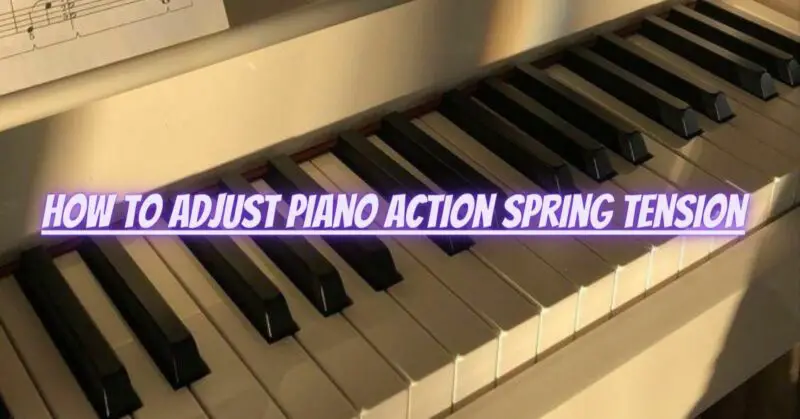Adjusting the piano action spring tension is an essential part of piano maintenance that ensures the keys’ responsiveness and playability. The spring tension determines how quickly the keys return to their resting position after being pressed. If the spring tension is too tight or too loose, it can affect the touch sensitivity and responsiveness of the piano. Here’s a step-by-step guide on how to adjust piano action spring tension:
1. Gather the Necessary Tools: Before you begin, gather the required tools, including a screwdriver, key easing tool (if available), and a flashlight.
2. Access the Piano Action: To access the piano action, open the top lid of the piano and remove the music desk. Next, locate the key frame cover, which is usually located at the front of the piano, just above the keyboard. Remove the key frame cover to expose the piano action.
3. Locate the Spring Screws: Inside the piano action, you will find several screws, including the spring screws. These screws are typically located near the back of the keys and are attached to the back rail or wippen flange. The number of screws varies depending on the piano model.
4. Identify the Problematic Key(s): Press each key one by one and observe how it returns to its resting position. If a key feels too heavy or sluggish in returning, it may have excessive spring tension. If a key returns too quickly and lacks resistance, it may have insufficient spring tension.
5. Adjust the Spring Tension: Using the screwdriver, turn the spring screws clockwise to increase the tension and counterclockwise to decrease it. Make small adjustments, usually no more than a quarter turn at a time, to avoid over-tightening or loosening the spring.
6. Test the Keys: After making adjustments, press the keys again and assess their responsiveness and touch sensitivity. The keys should have a consistent feel and return smoothly to their resting position after being released.
7. Check Multiple Keys: Repeat the adjustment process for multiple keys throughout the piano action to ensure uniformity in touch and responsiveness.
8. Fine-Tuning with Key Easing Tool (Optional): If available, a key easing tool can be used to fine-tune the spring tension of individual keys more precisely. The key easing tool allows for incremental adjustments and can help achieve a more even touch across the keyboard.
9. Reassemble the Piano Action: Once you are satisfied with the adjustments, reassemble the key frame cover, music desk, and top lid of the piano.
10. Seek Professional Help if Needed: Piano action regulation requires expertise and precision. If you are uncertain about adjusting the spring tension or encounter difficulties during the process, it’s best to seek the assistance of a professional piano technician. A qualified technician will have the knowledge and tools to perform precise regulation and ensure that the piano action functions optimally.
By adjusting the piano action spring tension, you can optimize the touch and responsiveness of the keys, providing a more enjoyable playing experience and allowing for greater musical expression on the instrument. Regular maintenance and regulation are vital to keep the piano in excellent playing condition and preserve its sound quality for years to come.

